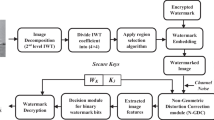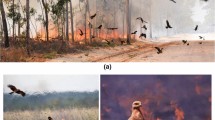Abstract
Digital filters are generally designed by identifying the transfer functions. Most researches are focused on the goal of approaching the desired frequency response and take less additional consideration of structure characteristics. As a matter of fact, structure characteristics can greatly affect the performance of the digital filter. If only the frequency response is considered, the identified transfer function may not be the optimum. In this situation, structure synthesis is also limited by the form of the identified transfer function. This paper proposes a structure evolution-based optimization algorithm which allows the integrated consideration of structure issues and frequency response specifications in design stage. The method generates digital filter structures by a structurally automatic generation algorithm which can randomly generate and effectively represent digital structures. The structures, seen as chromosomes, are evolved over genetic algorithm for the search of the optimal solution in structure space. They are evaluated according to the mean square error between the designed and the desired frequency responses. Simulation results validate that the algorithm designs diversified structures of digital filters, and they meet target frequency specifications and structure constraints tightly. It is a promising way for optimized and automated design of digital filters.


















Similar content being viewed by others
References
Boudjelaba K, Ros F, Chikouche D (2014) Potential of particle swarm optimization and genetic algorithms for FIR filter design. Circuits Syst Signal Process 33(10):3195–3222
Boudjelaba K, Ros F, Chikouche D (2014) An efficient hybrid genetic algorithm to design finite impulse response filters. Expert Syst Appl 41(13):5917–5937
Chandra A, Chattopadhyay S (2014) A novel approach for coefficient quantization of low-pass finite impulse response filter using differential evolution algorithm. Signal Image Video Process 8(7):1307–1321
Chen C (1979) One-dimensional digital signal processing. Marcel Dekker, New York
Chen H (2002) The matrix expression of signal flow graph and its application in system analysis software. Chin J Electron 11(3):361–363
Chen S, Istepanian R, Luk B (2001) Digital IIR filter design using adaptive simulated annealing. Digit Signal Process 11(2):241–251
Dai C, Chen W, Zhu Y (2010) Seeker optimization algorithm for digital IIR filter design. IEEE Trans Ind Electron 57(5):1710–1718
Deng TB, Qin W (2013) Coefficient relation-based minimax design and low-complexity structure of variable fractional-delay digital filter. Signal Process 93:923–932
Gray A Jr, Markrl J (1973) Digital lattice and ladder filter synthesis. IEEE Trans Audio Electroacoust 21(6):491–500
Harris S, Ifeachor E (1998) Automatic design of frequency sampling filters by hybrid genetic algorithm techniques. IEEE Trans Signal Process 46(12):3304–3314
Huang C, Li G, Xu Z, Yu A, Chang L (2012) Design of optimal digital lattice filter structures based on genetic algorithm. Signal Process 92(4):989–998
Jackson L (2000) A correction to impulse invariance. Signal Process Lett IEEE 7(10):273–275
Karaboga N (2005) Digital IIR filter design using differential evolution algorithm. EURASIP J Appl Signal Process 2005(8):1269–1276
Karaboga N, Kalinli A, Karaboga D (2004) Designing digital IIR filters using ant colony optimisation algorithm. Eng Appl Artif Intell 17:301–309
Lim J, Oppenheim A (1988) Advanced topics in signal processing. Prentice Hall, Upper Saddle River
Lohn JD, Colombano SP (1999) A circuit representation technique for automated circuit design. IEEE Trans Evol Comput 3(3):205–219
Manoj V, Elias E (2009) Design of multiplier-less nonuniform filter bank transmultiplexer using genetic algorithm. Signal Process 89(11):2274–2285
Milivojevic Z (2009) Digital filter design, 1st edn. mikroElektronika, Belgrade
Mitra S (1998) Digital signal processing. McGraw-Hill, New York
Mondal S, Ghoshal SP, Kar R, Mandal D (2012) Differential evolution with wavelet mutation in digital finite impulse response filter design. J Optim Theory Appl 155(1):315–324
Narasimhan S, Veena S (2005) Signal processing: principles and implementation. Alpha Science Intl Ltd, Oxford
Pan ST (2010) A canonic-signed-digit coded genetic algorithm for designing finite impulse response digital filter. Digit Signal Process 20(2):314–327
Pan ST (2011) Evolutionary computation on programmable robust IIR filter pole-placement design. IEEE Trans Instrum Meas 60(7):1469–1479
Parks W, Burrus C (1987) Digital filter design. Wiley, Hoboken
Parks T, McClellan J (1972) Chebyshev approximation for non-recursive digital filters with linear phase. IEEE Trans Circuits Theory 19:189–194
Proakis JG, Manolakis DG (2007) Digital signal processing-principles, algorithms, and applications, 4th edn. Prentice Hall, Upper Saddle River
Saha S, Ghoshal S, Kar R, Mandal D (2013) Design and simulation of FIR band pass and band stop filters using gravitational search algorithm. J Memet Comput 5:311–321
Saha SK, Ghoshal SP, Kar R, Mandal D (2013) Cat swarm optimization algorithm for optimal linear phase FIR filter design. ISA Trans 52(6):781–794
Saha S, Kar R, Mandal D, Ghoshal S (2014) Harmony search algorithm for infinite impulse response system identification. Comput Electr Eng 40(4):1265–1285
Saha S, Kar R, Mandal D, Ghoshal S (2015) Optimal IIR filter design using gravitational search algorithm with wavelet mutation. J King Saud Univ Comput Inf Sci 27(1):25–39
Saha S, Datta R, Chowdhury R, Kar R, Mandal D, Ghoshal S (2013) Efficient and accurate optimal linear phase FIR filter design using opposition-based harmony search algorithm. Sci World J, article ID 320489
Salvador R, Otero A, Mora J, de la Torre E, Riesgo T, Sekanina L (2013) Self-reconfigurable evolvable hardware system for adaptive image processing. IEEE Trans Comput 62(8):1481–1493
Sarangi A, Sarangi SK, Padhy SK, Panigrahi SP, Panigrahi BK (2014) Swarm intelligence based techniques for digital filter design. Appl Soft Comput 25(C):530–534
Singh CR, Arya SK (2013) An optimal design of IIR digital filter using particle swarm optimization. Appl Artif Intell 27(6):429–440
Srinivas M, Patnaik L (1994) Genetic algorithms: a survey. Computer 27:17–26
Tanaka Y, Ikehara M, Nguyen T (2008) A lattice structure of biorthogonal linear-phase filter banks with higher order feasible building blocks. IEEE Trans Circuits Syst I 55(8):2322–2331
Uesaka K, Kawamata M (2003) Evolutionary synthesis of digital filter structures using genetic programming. IEEETrans Circuits Syste II Analog Digit Signal Process 50(12):977–983
Vasundhara, Mandal D, Kar R, Ghoshal SP (2013) Digital FIR filter design using fitness based hybrid adaptive differential evolution with particle swarm optimization. Nat Comput 13(1):55–64
Wang Y, Li B, Chen Y (2011) Digital IIR filter design using multi-objective optimization evolutionary algorithm. Appl Soft Comput 11(2):1851–1857
Wang Y, Li B, Weise T (2013) Two-stage ensemble memetic algorithm: function optimization and digital IIR filter design. Inf Sci 220:408–424
Zhu W, Fang JA, Tang Y, Zhang W, Du W (2012) Digital IIR filters design using differential evolution algorithm with a controllable probabilistic population size. PLoS One 7(7):266–266
Acknowledgements
This study was funded by 15A510018, 15A510019, 12A510002, 142102 210629, 2008YBZR028 and ZZJJ20140037.
Author information
Authors and Affiliations
Corresponding author
Ethics declarations
Conflict of interest
All authors declare that they have no conflict of interest.
Ethical approval
This article does not contain any studies with human participants or animals performed by any of the authors.
Informed consent
Informed consent was obtained from all individual participants included in the study
Additional information
Communicated by V. Loia.
Rights and permissions
About this article
Cite this article
Chen, L., Liu, M., Wu, J. et al. Structure evolution-based design for low-pass IIR digital filters with the sharp transition band and the linear phase passband. Soft Comput 23, 1965–1984 (2019). https://doi.org/10.1007/s00500-017-2910-2
Published:
Issue Date:
DOI: https://doi.org/10.1007/s00500-017-2910-2




